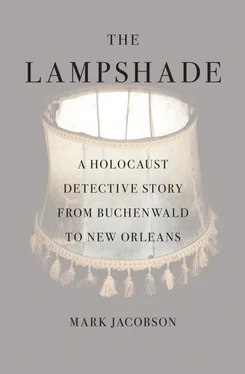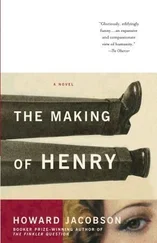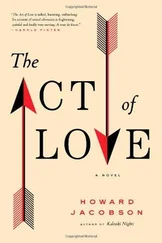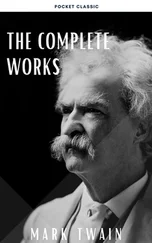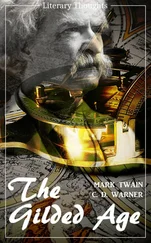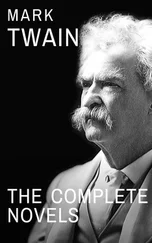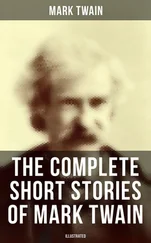This was true. Beyond the DNA testing and showing the lampshade to a bevy of curators, I hadn’t done much. But that’s why I was calling her. The five grand I’d already laid out for the Bode report had maxed out the family budget for lampshade testing. My hope was that an organization like the USHMM, with its $200 million endowment, might be willing to share or, better yet, take over the financial burden.
Saltzman put an abrupt halt to that notion. “We wouldn’t be interested in accepting such an object and we would never display it,” she said. “We are an educational institution and this has no educational value whatsoever.”
“You’re saying even if it’s real, it has no educational value?”
“This is a museum dealing with the Holocaust. This object cannot be proved to legitimately be part of the Holocaust, so we cannot treat it as such. Sixty-odd years of research and it has never been proved that a thing like this was Nazi policy or practice.”
“What about all the stories about lampshades? Everyone knows about it; doesn’t that make it at least worth talking about?”
“Not from the point of view of the museum.” Diane Saltzman had about run out of patience. “What I’m saying is even if I could prove its reality, even if you could prove it was made out of the skin of a Buchenwald prisoner from 1943, which you can’t —it would still not be part of the practice of the Holocaust. It would only be an isolated incident, the work of extreme individuals.”
“The whole thing is pretty extreme, wouldn’t you say?” Was Saltzman saying that if a lone lunatic SS man, some Ed Gein—style Nazi, had made a lampshade, that would fall under the heading of personal rather than institutional psychopathy and therefore not fall within the purview of august organizations like national museums? “Listen, all I’m trying to do is find out what it is.”
“I already told you what it is. It is a myth,” said the former head of collections. “Even if you could document it one hundred percent, it would still be a myth.”
“What?”
She was getting ready to hang up.
“So what do you suggest I do with the thing? Just throw it out?”
Diane Saltzman gathered herself. This conversation had come to a close. “I wish you good luck.”

SIX

It made no sense to me. Why would a top-level representative from the leading Holocaust center in the United States be so invested in maintaining that the lampshade was a myth? There had to be more to it than fielding incessant panicked phone calls from poor souls haunted by the specter of a paper shade in their attic.
To call the lampshade a myth was to place it in the class of objects like “the Spear of Destiny,” aka “the Holy Lance,” which John, in his gospel, says was used by the Roman soldier Longinus to pierce Christ’s side as he hung on the cross. From this wound came “a sudden flow of blood and water,” an anointment that, legend has it, imbued the weapon with vast mystical powers. According to the literature on the topic, the spear passed through the hands of many powerful men including the Persian king Khosrau II, Emperor Constantine, the Turkish sultan Bayezid II, along with a number of French kings and popes. It would later play a pivotal role in Wagner’s Parsifal, which was almost certainly how the young Adolf Hitler became aware of it.
While living in Vienna, Hitler, then in his occultist Thule Society phase, saw the alleged spear on display at the Hofburg Treasure House and wrote about it in Mein Kampf . “I knew with immediacy that this was an important moment in my life… I felt as though I myself had held it in my hands before in some earlier century of history, that I myself once claimed it as my talisman of power and held the destiny of the world in my hands.” After the German-Austrian Anschluss in 1938, Hitler took possession of the spear and brought it to Berlin.
What happened after that is unclear. According to a series of books written by Howard A. Buechner, a New Orleans physician and longtime member of the faculty at both the Tulane and LSU medical schools (and also, by chance, one of the first Allied soldiers to enter the Dachau camp, where he witnessed the infamous Dachau Massacre of German guards by American GIs), Hitler, fearing the war was lost, ordered Himmler to dispatch a contingent of SS men to bury the Spear of Destiny in Antarctica. This was done to keep the spear from falling into the hands of General George Patton, who also coveted it. Patton writes of the spear in one of his many warrior poems, “Through a Glass, Darkly,” in which he imagines himself as Longinus: “and I feel the rending spear. / Perhaps I stabbed our Savior / in His sacred helpless side.” After the war the spear was returned to the Vienna museum, where it remains today, although Buechner claims the object is a fake, manufactured by the Nazis as a ruse. The real spear, the New Orleans doctor contends, remains buried under the Antarctic ice. [12] Buechner’s books Adolf Hitler and the Secrets of the Holy Lance (Thunderbird Press, 1988) and Hitler’s Ashes—Seeds of a New Reich (Thunderbird Press, 1989) were written with the pseudonymous “Captain Wilhelm Bernhart.” Buechner, a much-respected medical professor in New Orleans and a regular at many uptown society gatherings, claims “Bernhart,” whom he presents as “a former U-boat captain,” was privy to much of what went on between Hitler and Himmler regarding the Spear of Destiny. In Buechner’s account, the spear was recovered from beneath the South Pole ice in 1979 and now is back in Europe, in the possession of a mysterious organization called the Knights of the Holy Lance. Buechner has also advanced the theory that the ashes of Hitler and Eva Braun were similarly buried and retrieved from Antarctica. Buechner’s work on the Dachau Massacre, which he claims to have witnessed, is far less fanciful. As recounted in his book Dachau: The Hour of the Avenger (Thunderbird Press, 1986), 520 German prisoners of war were murdered by American forces under the command of 1st Lt. Jack Bushyhead of the 3rd Battalion, 157th Infantry Regiment. Bushyhead, Buechner reports, was a “full-blooded Cherokee Indian” whose ancestors had been brutalized during the infamous “Trail of Tears,” a race-based death march in which thousands of Native Americans were forced from their homeland to reservations in Oklahoma. In murdering these Germans, Bushyhead was motivated, Buechner conjectures, by a kinship with the Jewish people who, like the Cherokee, had been “harassed and driven from country to country for thousands of years.” This idea is echoed in the recent Quentin Tarantino film Inglourious Basterds, in which Brad Pitt plays a Native American leading a platoon of Jews to take vengeance on the Nazis.
The lampshade was no Spear of Destiny. For one thing, the lampshade had witnesses, literally thousands of them. There was Ann Stringer, the UPI reporter who broke the story, who wrote that she could “see the pores and the tiny unquestionably human skin lines.” There was the testimony of American soldiers. Harry Snodgrass, an enlisted man from Tennessee, said, “It was in the commander’s office… lampshades made from the skins of Jews.” Warren Priest, another enlisted man, said, “I saw lampshades made of human skin… the commandant of the post collected these as a hobby.” Rudy Baum, of the Sixth Army, said he saw “lampshades and library book covers made from tanned human skin.” Margaret Bourke-White, whose Life magazine photos established much of the visual record of the camp, said she saw “skins for lampshades.” In a report dated April 27, 1945, Georges Vanier, the Canadian ambassador to France, wrote, “a lampshade was found—and this I saw—made from tattooed human skin.” Beyond this is the statement of Adolf Martin Bormann, son of Martin Bormann, Hitler’s private secretary, who many felt was running much of the Third Reich in the latter stages of the war. A longtime missionary, the younger Bormann recalled a visit to Himmler’s house. “The furnishings were very strange,” Bormann said. “There was a standard lamp, for example, with a lampshade made out of parchment. And this lampshade made out of parchment was made with human skin.” [13] In his memoir, The Course of My Life, British prime minister Edward Heath writes of how as a young man he saw “tattooed human skins on lampshades” among the exhibits at Nuremberg, which is somewhat puzzling since no tattooed lampshades were introduced in evidence at the war crimes trials.
Читать дальше
